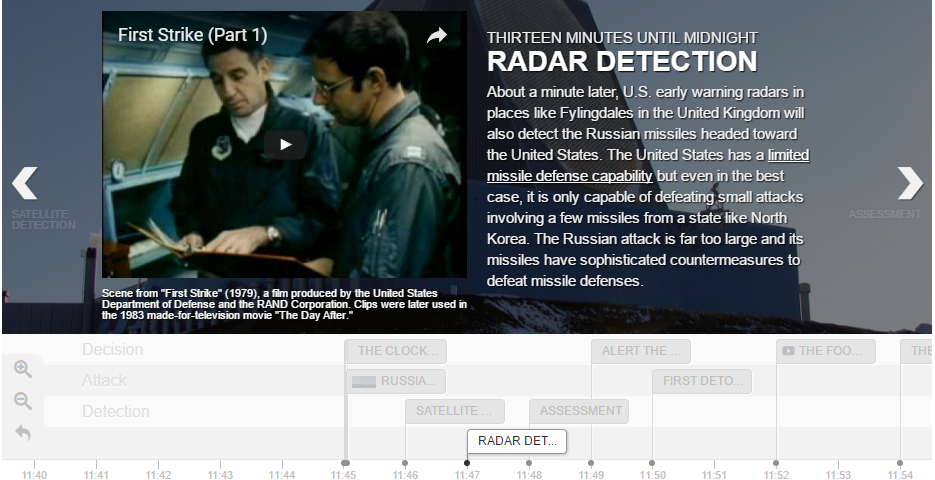
NTI’s Lynn Rusten on Defense Department’s New Strategy for Countering Weapons of Mass Destruction
The DoD’s new CWMD strategy, last updated in 2014, comes at a time when longstanding norms against nuclear use are being tested.
See the timeline.
What does it mean for the U.S. president to “push the button”?
Recently, retired General Michael Hayden was asked about remarks attributed to Donald Trump regarding U.S. nuclear weapons. One of the hosts of the show, Joe Scarborough, asked Hayden how quickly a U.S. President could launch nuclear weapons. Hayden replied “The system is designed for speed and decisiveness. It is not designed to debate the decision.” What Hayden is describing is “Launch Under Attack” — the option to launch U.S. nuclear-armed ICBMs after enemy missiles have been launched, but before they strike targets in the United States.
A new timeline, produced by the James Martin Center for Nonproliferation Studies for the NTI website, illustrates how much time is lost to determining that an attack is underway (or whether it is a false alarm) and the time needed to physically launch U.S. ICBMs, and how little is left over for a U.S. President to weigh options and consider alternatives.
Sign up for our newsletter to get the latest on nuclear and biological threats.
The DoD’s new CWMD strategy, last updated in 2014, comes at a time when longstanding norms against nuclear use are being tested.
The paper highlights the need for renewed attention to the catastrophic effects of nuclear conflict as a crucial step toward reducing the risk of nuclear use.
A new report from NTI highlights the critical need for a global diplomatic approach to address growing cyber risks, including, where possible, through cooperation between the United States and Russia.



